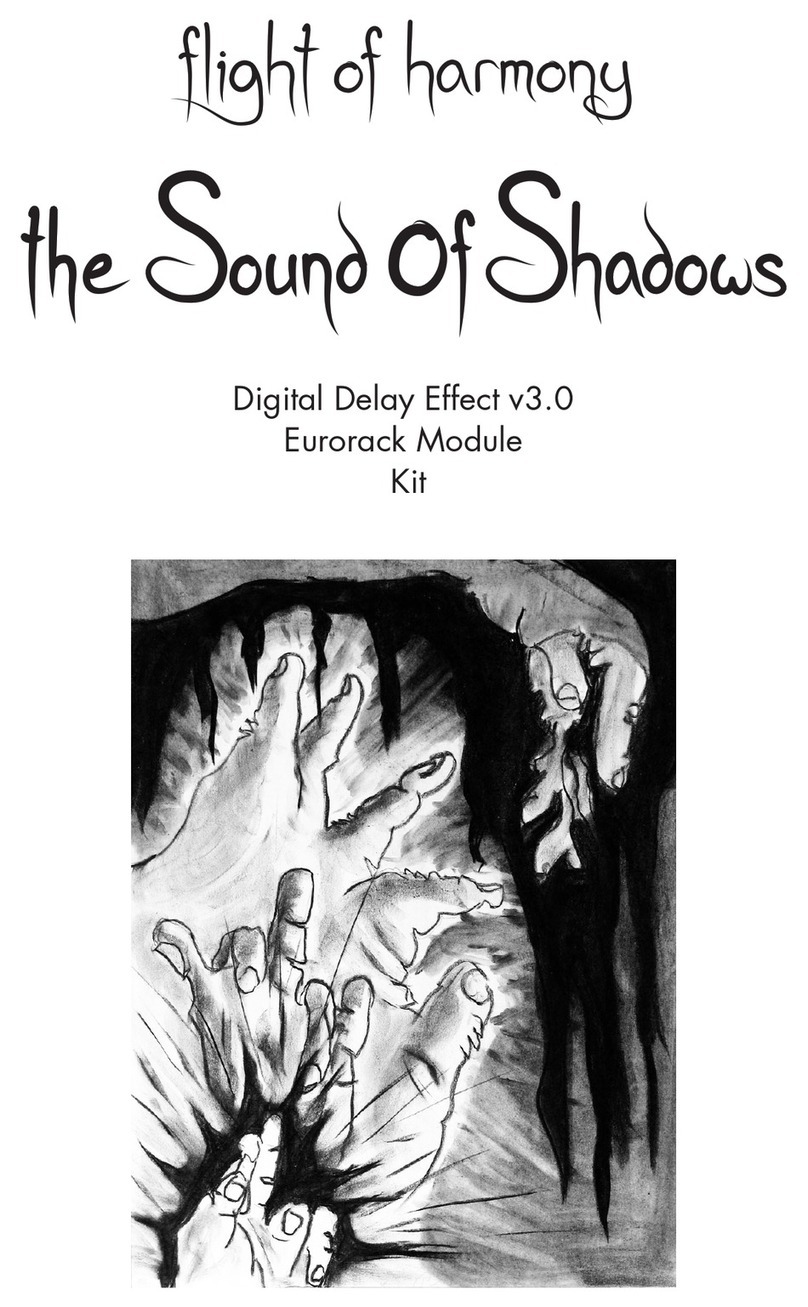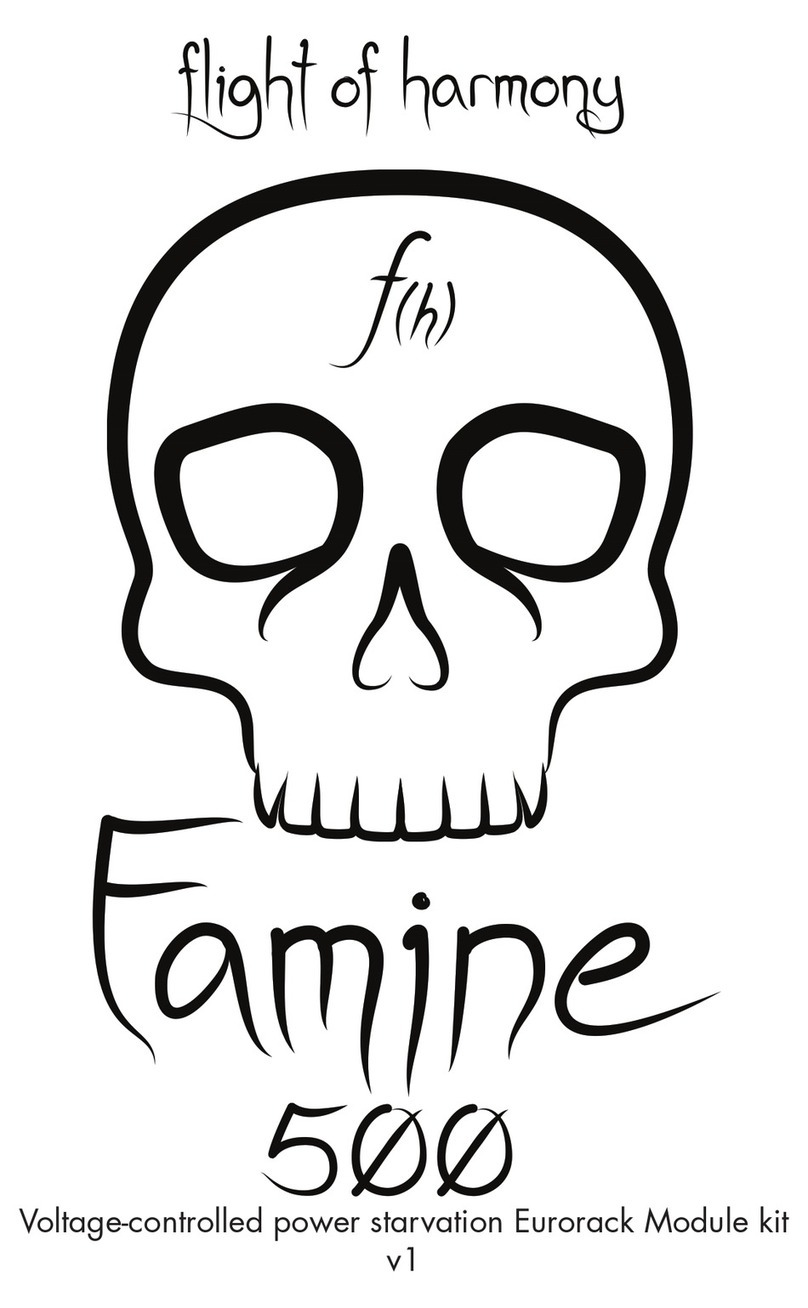
FYI
As with all f(h) products, the Sinner was engineered towards maximizing
functionality while keeping cost as low as possible. If some aspects of the unit
seem awkward, it is most likely due to this. The goal is to make unique, useful,
enjoyable, and affordable instruments, not just hoover1out your bank account.
And remember: every instrument has its quirks and unexpected aspects, so
RTFM2! All the way through! Specic quirks are mentioned in the description of
the particular feature they apply to, so please read this through before emailing!
What is it?
Sinner is based on a sine-shaping circuit that applies logarithmic distortion
to the input signal, causing ramp, saw, triangular, and similar, signals to be more
rounded and approximate a sine wave. Pretty freaking boring when you read it
like this, so it has a few extra features that allow you to twist and wring your signal
into much more excruciating and exciting shapes. Part of this is accomplished via
a four-quadrant multiplier (4QM), which also offers ring modulation (RM) as well
as typical voltage-controlled amplier (VCA) capability.
Sinner is direct-coupled (DC) all the way through, so you can use it to control
and process control voltages (CV) and other DC signals in addition to sculpting
audio. If, after blowing a few speaker cones, you decide you've had enough of
that fun, it also has a full-bypass toggle switch to change the output to capacitive
coupling (AC) and block the DC bias from the signal. The LED above the switch
is lit in DC mode, and off in AC mode. The output LED is bicolor: red for positive
signals, green for negative, and gives you something fun to stare at, at 3:50 am,
when you haven't slept in two days, and your vision is a blurry tunnel and the
fuzziness in your head is pulsing to the sounds and your ngers and cheeks are
tingling and probably warning you of something important but wow that ashy
thing is hypnotic, isn't it?
The secret message of the Sneks3
Them twisty Sneks tell you the basic function of the controls and jacks:
• Heads curling in like fangs: signal inputs and their controls
• Tails curving out: signal outputs and their controls
• Completely encircled: CV and internal device functions
Feature summary:
1) Hoover is a company that manufactures vacuum cleaners.
2) RTFM = Read The F*cking Manual!
3) Snakes
• Waveshaping
• Sine shaping
• CV processing
• Ring modulation
• Amplitude modulation
• Has Sneks
SIN-E v1.0 manual Mar. 2022 — p.2/6 www.ightofharmony.com




























